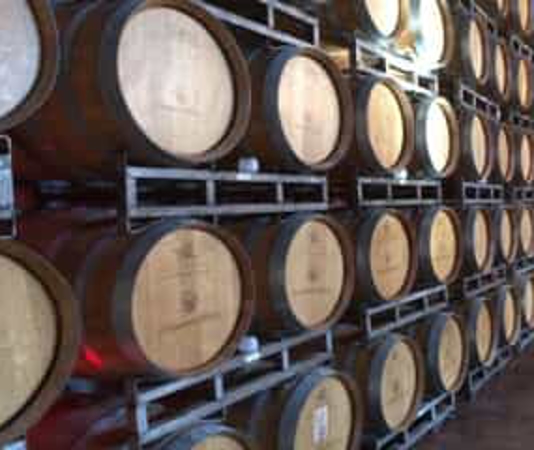
Best Practices for Cleaning and Sanitation in the Winery Industry
All industries have been impacted by the COVID-19 crisis. The pandemic has forced enterprises to rethink the way they do business. The wine industry is one of the many industries profoundly affected by the outbreak. The crisis has had major negative impacts on wineries around the country.
As states reopen, wineries gear up to compete against each other. This is a critical time. As a responsible business, you need to ensure that safety does not take a backseat.
Here are some sanitation best practices for wineries.
Sanitation Guide for Wineries
Wineries are known to have high microbial loads, especially during harvest. Low pH and ethanol are major population drivers in wineries. Microorganisms need vectors to travel through wineries. Typical examples of vectors in wineries include humans, improperly sanitized equipment or tools, and HVAC systems.
Follow these tips to prevent wine spoilage, and create a sanitary environment:
- Inspect the winery premises, cooperage, and equipment at least once every month. Consider inspecting your winery more often during the harvest and crush season
- The work area should be free of clutter. Winery equipment should be clean at all times. Develop and follow a proper schedule
- The winery must be clean and free of refuse at all times
- Work with your winery manager to develop cleaning and sanitation protocols. Encourage key stakeholders to come up with and share ideas
Steps of Effective Winery Sanitation
Preliminary Cleaning
In any sanitation process, the first step involves removing as much visible debris as possible. Cleaning can be done either manually or with mechanical cleaning systems such as spray balls or tanks and barrel washers.
High-pressure water without added chemicals can remove organics and build-up at a fraction of the cost associated with using a detergent or sanitizer. To ensure proper cleaning, direct the spray at an angle to the surface to be cleaned.
Using warm water in a high-pressure delivery system will improve its efficiency and save time and water. Do not use hot water for preliminary cleaning.
To maintain the integrity of the protective oxide coating on stainless steel, use soft bristle brushes for scrubbing. Avoid using fiber or metal scratch pads or brushes for removing tenacious deposits.
Detergent, Cleaners, and Surfactants
After getting rid of debris and film, clean the surface. Use detergents or cleaners to solubilize any deposits. Before using a detergent, learn about its unique properties. Avoid increasing the concentration beyond recommended levels as doing so is not cost-effective.
When determining the appropriate contact time between the detergent and application surface, consider how you intend to use the agent and the mode of application.
High-pressure spray requires less contact time with the surface than gels or foams. Gels are usually used in low-pressure systems.
A detergent can be made up of different components such as surfactants, acids, chelating agents, and alkalis. Known as-built cleaners or built detergents, such formulations can be used to achieve multiple cleaning goals.
You can also create your own detergent in your winery. Before experimenting with chemicals, consult an expert as inappropriate handling can result in injuries or even death.
Commonly Used Adjuncts in Formulations
Surfactants
Surfactants are also known as wetting agents. These organic molecules structurally have both hydrophobic and hydrophilic portions. Surfactants reduce the surface tension of water and help suspend debris and microorganisms adhering to surfaces. They do so by facilitating contact between the detergent and the surface being cleaned.
There are four main classifications of surfactants – nonionic, amphoteric, cationic, and anionic. Nonionic forms have the broadest range of properties. Nonionic forms can be either extremely good wetting agents or emulsifiers (it all depends on their chemical structure).
The foaming abilities of nonionic surfactants can vary. This is something to consider as a surfactant’s foaming ability can impact the success of a cleaning process.
Acids
Phosphoric acid is a commonly used adjunct in several formulations, courtesy of its ability to solubilize minerals. Though many other acids are used as cleaning compounds, many of them tend to be more corrosive to metal. For instance, nitric acid is known for its ability to remove stubborn mineral deposits, but it can prematurely degrade gasket material.
Alkali
Most detergents include strong alkalis or caustics such as caustic soda (NaOH) or caustic potash (KOH). Both NaOH and KOH are known for their excellent cleaning abilities and can remove fats and deposits. KOH, however, has better rinsing ability than NaOH.
Be very careful when using detergents with these chemicals as they are corrosive even to stainless steel and can cause irreversible damage to equipment if recommended application levels are exceeded.
Other alkali compounds used in wineries are sodium ortho and meta silicates. They are less corrosive to metals and are known for their cleaning ability.
Sanitation Monitoring
Though cleaning and sanitation significantly lower the microbial population, some microbes may still survive. In many cases, microorganisms deposited on equipment adhere to the surface. They grow and multiply to form a colony known as a biofilm. Over time, a biofilm can get bigger and start trapping debris, soils, other microorganisms, and nutrients.
To prevent this from happening, develop an effective cleaning and sanitation program. Revisit your program and evaluate its effectiveness at prescribed intervals. Sample direct contact surfaces such as the interior of conveyors, pipelines, and tanks as well as areas where indirect contamination could occur.
Schedules and Documentation
Develop a standard operating procedure for your winery. An SOP must include protocols, documentation methods, and schedules. Crushers/stemmers should be cleaned out and thoroughly rinsed between lots. Make sure the sanitation cycle is performed every 8 hours.
Apply these practices to conveyors and hoppers where sugar can accumulate. Tanks should be cleaned and sanitized after use. Every tank should be rinsed with high-pressure water between fillings.
Do you need top-notch coronavirus cleaning services in Sonoma County? Look no further than West Coast Fire & Water. To discuss your requirement, call 707-504-3708.

